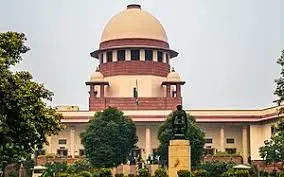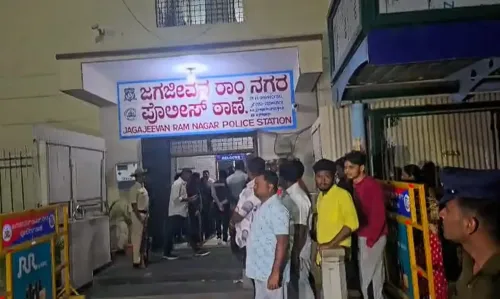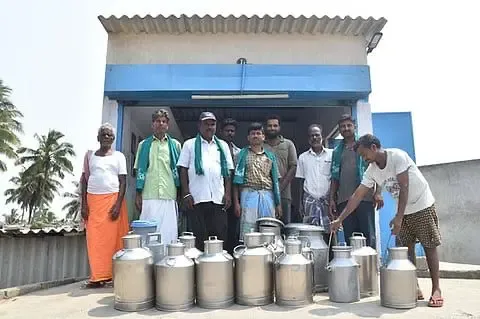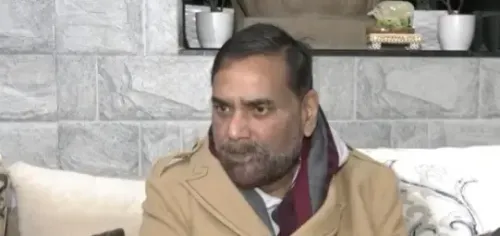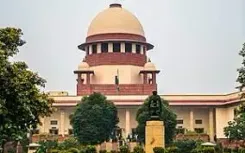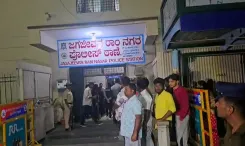What Happened in the Jhalawar School Tragedy?
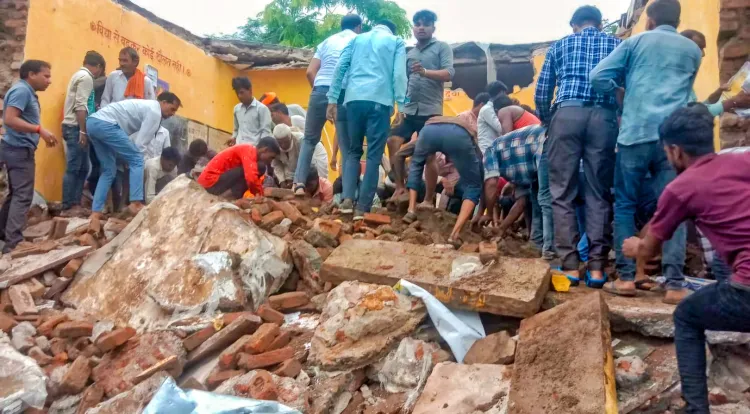
Synopsis
Key Takeaways
- Seven children lost their lives due to a roof collapse.
- 27 others injured, with many still hospitalized.
- Accountability remains a significant concern.
- A high-level inquiry has been promised.
- The community had reported the building's poor condition previously.
Jaipur, July 26 (NationPress) Seven innocent children tragically lost their lives when a dilapidated school building collapsed in Rajasthan's Jhalawar, with 27 others injured. Many of these children remain unconscious in hospitals, their injuries a testament to the trauma and pain they have endured.
Despite this tragedy, the question of accountability looms large. Who is responsible for transforming a learning environment into a site of devastation? Who will answer for the untimely deaths of these innocent souls?
These pressing questions echo amidst the chaotic responses from politicians, who have rushed to issue statements following the news of this heartbreaking event.
The incident on July 25 at a government school in Piplodi village, Jhalawar district, is more than just an unfortunate occurrence — it's a glaring reflection of a failing system.
Yet, responsibility remains elusive. In the name of accountability, only five teachers have faced suspension. It’s important to remember that teachers are meant to educate, not to assess the structural integrity of buildings. Where are the leaders, the engineers, and the officials? Shouldn’t those in higher positions be held accountable? Many questions remain, but answers are scarce.
A place designed to nurture futures has instead extinguished dreams. And what does the system offer in response? A promise of a “high-level inquiry.”
Even before the investigation commenced, a bulldozer was dispatched to demolish the remaining school structure, the very site that could have held crucial evidence of negligence.
District Collector Ajay Singh stated that no one should be blamed, claiming that the school administration never notified authorities about the building’s deteriorating condition. Education Department officials echoed this sentiment. However, the voices of the community tell a markedly different story.
Babulal, the father of an injured child named Vikram, revealed that the school building had been in disrepair for over two years.
A local initiative was even underway to raise Rs 200 per household for repairs — a desperate attempt when the state failed to intervene. “We wish we had managed to collect the donations,” he expressed regretfully. Another student, Varsha Raj Kranti, recalled how pebbles began tumbling from the roof just moments before the collapse.
The children alerted their teachers, but their concerns were dismissed. Minutes later, the roof caved in. Tina, a class 8 student, recounted: “Children from all classes were gathered in a single room. Some kids noticed pebbles falling and informed Teacher Javed, who told us to sit quietly. Shortly after, a section of the roof collapsed. I fled after hearing the noise. Only a few of us managed to escape before the roof fell completely.”
The warning signs were evident. Everyone was aware, yet no one acted.
Village Development Officer Daulat Gurjar confirmed that a letter had been sent four years ago recommending repairs for the school.
Some work was carried out by the village panchayat. Villager Khushang Sharma noted that previous repairs were funded through donations collected on national holidays like August 15 and January 26.
It’s shocking that government schools designed to uplift the most disadvantaged must rely on donations for their upkeep. Each year, massive budgets are approved with great fanfare in legislative assemblies. Yet, schools remain neglected, unmaintained, and overlooked by those in power.
RLP MP Hanuman Beniwal made a poignant statement in Parliament: “Leaders and officials should send their children to government schools.”
This highlights the core issue — the system neglects government schools because the children of those in power do not attend them. These institutions are left for the poor, who only matter during election campaigns. In the realm of government education, we hear grand promises: “We will establish English-medium schools. Nutrition will be enhanced. CCTVs will be installed. Textbooks will be free.”
But why not prioritize the maintenance of existing structures? Why not ensure that the buildings where underprivileged children aspire are secure? Ask yourself: has any politician, bureaucrat, or minister ever faced a similar disaster in their own homes? Certainly not — because there are no compromises when it comes to their residences. There are no kickbacks, no fraudulent contracts, and no hollow walls constructed for show. Yet, when it comes to the schools of the poor, even the rooms are allowed to decay — until they collapse.
On July 1, Rajasthan Education Minister Madan Dilawar posted on social media: “Summer vacations are over. Starting today, definitely send your little children to school. Let’s go to school!” Perhaps he overlooked the crucial addition: “...but at your own risk.” Families took that risk, and the outcome was the horrifying tragedy that unfolded on July 25. Now the pressing question remains: ‘Where’s the Accountability’?
This catastrophe was not an act of nature; it was a result of human negligence — foreseeable and preventable.
The truth is evident. The culprits are not hiding; they simply remain unnamed. We can only hope that our governments recognize this truth before another roof collapses on another classroom filled with dreams, lamented a local who witnessed the cremation of six children on the same day in Jhalawar.


